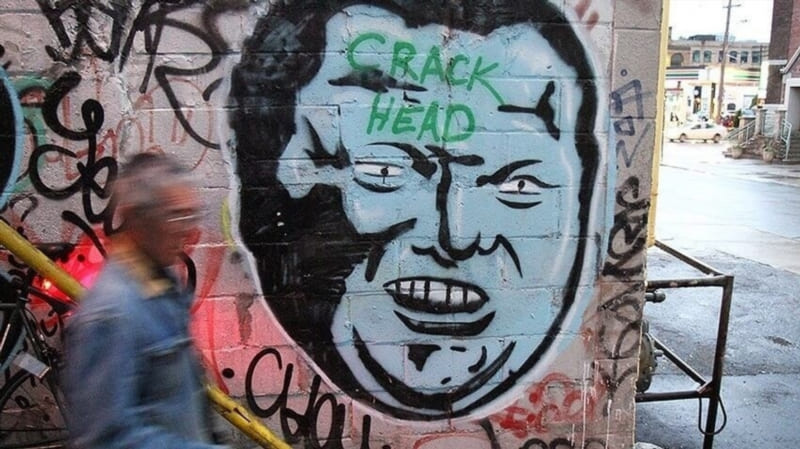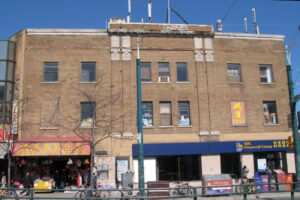In the bustling heart of Toronto lies Queen West, a vibrant and culturally rich district renowned for its street art and graffiti. In 2011, Rob Ford, the then-mayor of Toronto, initiated a stringent crackdown on graffiti across the city. But what did this mean for Queen West and its community of artists? Dive in to explore the ramifications, the public sentiment, and the future of street art in Toronto.
The Allure of Queen West’s Street Art
Queen West: More Than Just Walls
As you stroll down Queen West, it’s impossible not to be captivated by the myriad of colors, designs, and messages splashed across the walls. These murals, some politically charged and others merely aesthetic, represent the soul of the district. They narrate stories, resonate with emotions, and mirror the ethos of the community.
For locals, it’s more than just paint on walls. It’s a reflection of their identity, their struggles, and their celebrations. The spontaneous brush strokes, the choice of vibrant shades, and the sometimes whimsical, sometimes poignant images communicate an ever-evolving narrative.
The Rise of Street Artists
In the past few decades, Queen West has become a haven for budding artists. Drawn to the allure of a free canvas and an appreciative audience, many have used the district’s walls to showcase their talent. Names like “Spud,” “Anser,” and “Mediah” became synonymous with Toronto’s street art scene. This gave the area an edge, a raw authenticity that made it a hotspot for tourists and locals alike.
Ford’s Crusade Against Graffiti
But as with all tales of vibrant creativity, there’s a twist. Enter Rob Ford, with a mission to ‘clean up’ Toronto. His initiative, while well-intentioned, raised many an eyebrow and ruffled more than a few feathers.
Why the Crackdown?
Ford believed that a city free from graffiti would appear more organized, clean, and appealing to both residents and potential investors. The argument was simple: graffiti was seen by many as vandalism, a public nuisance that lowered property values and deterred businesses.
The city, under Ford’s direction, poured resources into removing graffiti from public spaces, imposing fines on property owners who didn’t comply, and increasing surveillance.
Queen West’s Artists Push Back
Understandably, the Queen West community wasn’t thrilled. Many artists saw the crackdown as an infringement on their freedom of expression. They argued that instead of enhancing the city’s image, the campaign stripped Toronto of its unique character. “Isn’t art, even on walls, a sign of life, passion, and culture?” many pondered.
Public Sentiment and the Graffiti Debate
The public’s reaction to Ford’s anti-graffiti campaign was polarized. While some applauded the efforts to ‘cleanse’ the city, others felt it was a blatant disregard for the urban art form.
- For the Campaign: Supporters claimed that the move would make Toronto more inviting. They often cited instances where graffiti was linked to gang activity or used inappropriate language and imagery.
- Against the Campaign: Detractors opined that not all graffiti was detrimental. Street art, they stressed, added vibrancy to the urban landscape. They proposed a system where artists could get permits or designated spaces to paint, allowing for a harmonious coexistence of art and order.
The Aftermath and Future of Street Art in Toronto
In the years that followed, the debate simmered down, but the repercussions were evident. Several iconic murals in Queen West were lost, but in their place, new ones emerged, a testament to the indomitable spirit of the community.
Art Finds a Way
As the old adage goes, “Where there’s a will, there’s a way.” Many artists began collaborating with property owners, turning blank walls into commissioned masterpieces. This allowed them to work without the fear of repercussions while ensuring that their creations were respected and preserved.
Moving Forward
Toronto’s stance on street art has since evolved. The realization dawned that eradicating graffiti entirely was neither feasible nor desirable. Today, there’s a push towards recognizing and celebrating street art as a legitimate form of expression. Initiatives like StreetARToronto (StART) have been launched, aiming to beautify the city while promoting local talent.
So, What’s the Takeaway?
Cities are living, breathing entities, ever-evolving and adapting. The saga of Rob Ford’s graffiti crackdown serves as a poignant reminder that while urban aesthetics matter, so do the voices of its residents. Art, in all its forms, plays a crucial role in shaping a city’s soul. Whether on a canvas in a gallery or a wall in Queen West, it deserves to be celebrated and cherished.









